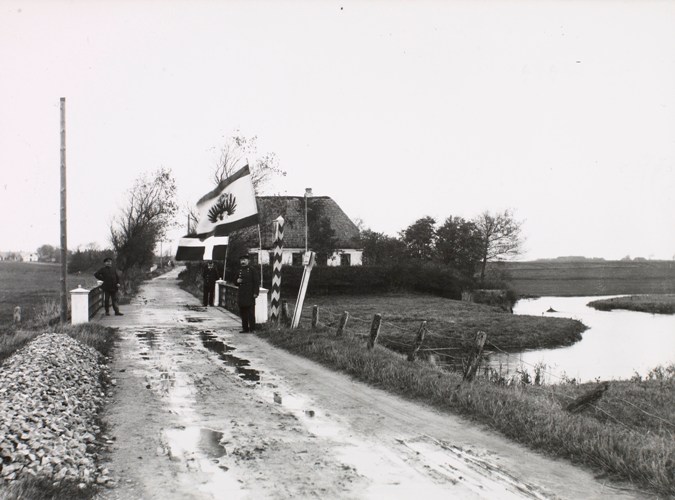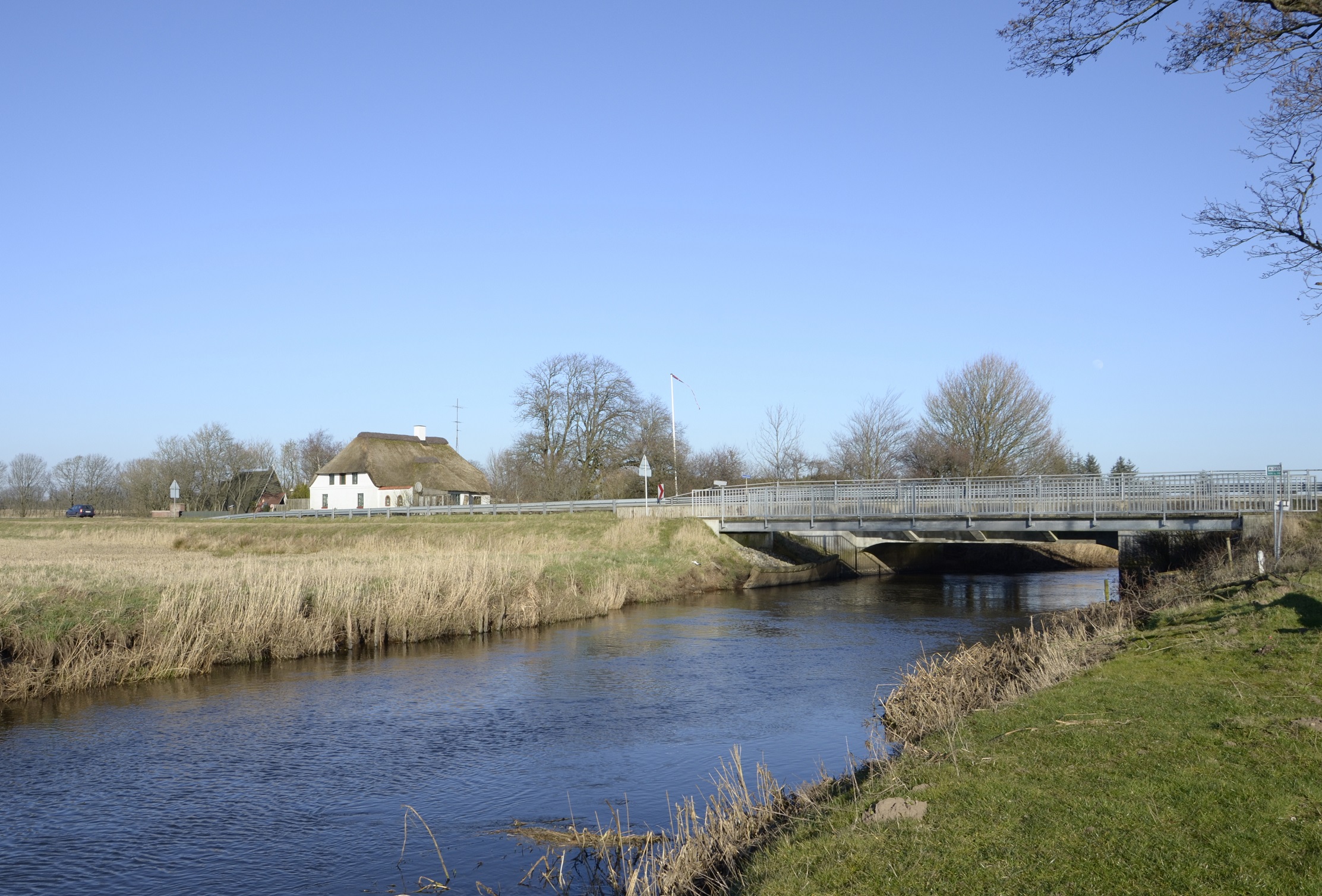Skodborghus - border inspection post 1864-1920
At the peace treaty in December 1864, the river Kongeå became the national border between Denmark and Prussia. A border inspection post was set up at Skodsborghus. The Danish customs rented the pensioner's accommodation from Skodborghus Inn as a customs office.
The house was not ready for occupancy, so for the first year the customs office was located at the inn. The German customs officers moved into a small house on the main road about half a kilometre south of the border. In 1896, the German customs office moved to a newly-built house near the border, while in 1900 the Danish customs office moved to a newly-built house, which was about 50 metres north of the river.
Frederik VII’s bridge
The defeat in the war in 1864 turned many things upside down. A long stretch of the river Kongeå became the national border between Denmark and Prussia. The good traffic conditions were conducive for setting up a border inspection post at Skodborghus.
North of Skodborghus, the main road went from Kolding to Ribe. In 1862, the road from the main road Skodbordhus had been straightened out and the old wooden bridge over Kongeåen had been replaced by a new stone bridge with the pompous name 'Frederik VII's bridge'. At the border demarcation in 1865, the bridge fell to the Danish government, and thus the job of maintaining the bridge fell to the Danish government too.

The border at Skodborghus around 1910. Notice that the German eagle is upside down.
Photo: Det Kongelige Bibliotek
Photo: Det Kongelige Bibliotek
The Danish customs office
The Danish customs office was housed in the pensioner's accomodation to Skodborghus Inn, which the customs administration rented from the innkeeper's wife, Mrs Thomsen. The location was perfect. The house was the closest neighbour to Frederik VII's bridge, with a garden right down to the river bank.
On the other hand, the accommodation was in such poor condition that it was almost uninhabitable. While the house was being restored, the customs administration rented a few rooms at the inn to accommodate the customs officer and to use as an inspection post.
Around 1900, the conditions in the rented pensioner's house were too modest. A new building was erected 50 metres further north on the west side of the main road. This doubled up as accommodation for the customs officer as well as the customs office. Both houses still exist
The German customs office
The German customs office was in a small house, which was located by the main road about half a kilometre south of Kongeåen. The conditions gradually became too cramped, and in 1896 a new customs office was built at the main road just south of the river. In addition to acting as the customs office, it also housed two customs officers with their families. This house still exists, while the house where the first German customs office lay, was demolished around 1925.

The German customs office around 1910.
Photo: Vejen Lokalhistoriske Arkiv.
Chevaux de frise
During the First World War, the border was blocked. It was important for the German authorities to prevent unwanted traffic from coming across the border, especially the men from South Jutland who were of a drafting age. A beam was erected and a makeshift barrier was set up in the middle of the bridge. To prevent unwanted traffic from coming over the bridge, chevaux de frise were set up on the bridge as extra security. The chevaux de frise can still be seen today in the meadow south-east of the bridge.
Flag avenue and triumphal arch
The border crossing had a special significance on polling day on 10 February. Southern Jutlanders from all over Denmark returned to their birthplace to vote on the future of their nationality. Many had travelled by train to Vejen Station. An avenue of flags was hoisted all the way from the station to the border to welcome them.
A triumphal arch was erected at the Danish customs office. On the side against Denmark were the words "Scandinavia's border posts will be moved towards the South again 1864-1920". On the side against Germany were the words "Again the split will bend together 1864-1920".
The Danes were so sure of their victory that they gathered at Skodborghus on February 10 in the evening despite the storm and rain, to celebrate the event. They went across the border singing Danish songs, and for the first time in many years they planted the Dannebrog flag in Southern Jutland land.
Reunification Day
An even bigger celebration was Reunification Day on June 15 1920. The evening before, thousands of people from North and South Jutland gathered by Frederik VII's bridge. Speeches were held by editor Louis Rasmussen, Vejen, and principal Knud Pedersen from Skibelund Efterskole (Continuation School).
At the stroke of twelve at midnight, the large gathering of border residents, spearheaded by Niels Lauridsen's orchestra, went over the bridge to the tune of "Dengang jeg drog af sted." On the German side of the river, they were greeted by enthusiastic Southern Jutlanders. The border split had been erased and Southern Jutland was once again part of the Kingdom.
 Celebration of the Reunification at Skodborghus.
Celebration of the Reunification at Skodborghus. Photo: Vejen Lokalhistoriske Arkiv.
Literature
Hansen, Emil Aage: Kongeåen, Told- og statsgrænse 1864-1920, 2001.
Jonø, Martin: Kulturmiljøer langs Kongeå-grænsen, registrering og vejledning. Arkitektskolen i Århus 2003.
Author: Linda Klitmøller, museum curator, Sønderskov Museum

The bridge at Skodborghus

